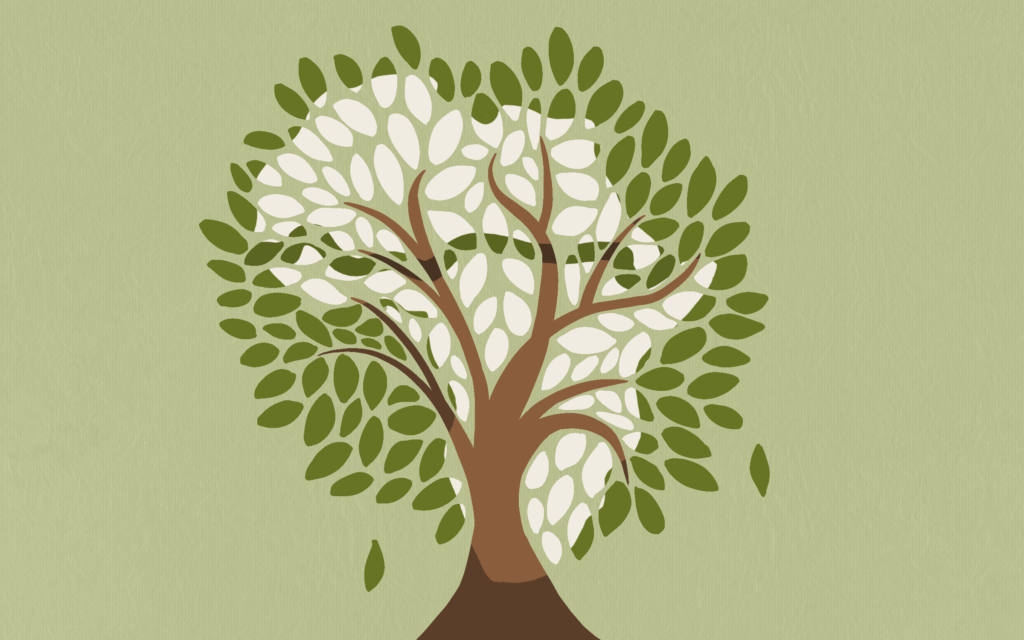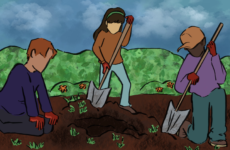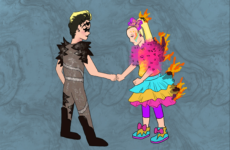
Graphic by Yujin Kim/The Choate News
An environmental movement led by the African Union is gaining momentum, with an ambitious goal to grow 8,000 km of vegetation across the Sahel region in Africa. Launched in 2007, The Great Green Wall, is regenerating a critical ecoregion of the world that has been devastated by land degradation and desertification.
The initiative began with the objectives of halting the expansion of the Sahara Desert and adapting to the unprecedented warm temperatures seen in the last decade. Since then, the goals and ambitions of the Union have only grown, and countries now aim to create jobs in the area, restore land that has been ruined by years of over-cultivation, as well as promote peace in African countries.
The Sahel has suffered the worst droughts on the planet in the last quarter of the 20th century, with Lake Chad shrinking over 90%. Its significance in the African environment is not to be understated; the region is home to some 300 million people, five million of whom have been displaced due to food insecurity and growing conflict in 2018. As one of the most impoverished and rapidly growing regions in the world, the Sahel is experiencing shorter, more intense, and less predictable precipitation. It has an expected temperature increase that is one and a half times faster than the global average, with the United Nations Special Adviser on the Sahel describing the region as “arguably one of the most vulnerable to climate change [with most likely] the largest number of people disproportionately affected by global warming.”
The Great Green Wall initiative aims to restore 100 million hectares of land and, in the process, create ten million jobs and sequester 250 megatons of carbon. The initiative utilizes Indigenous land-use methods, which uses simple water harvesting techniques to protect naturally grown trees that grew. The African Union and the United Nations Food and Agriculture Organization refer to The Great Green Wall as “Africa’s flagship initiative to combat land degradation, desertification and drought.”
So far, the eleven countries involved in the effort — Djibouti, Eritrea, Ethiopia, Sudan, Chad, Niger, Nigeria, Mali, Burkina Faso, Mauritania, and Senegal — have only reached 16% of their target, largely because of a lack of funding. In Ethiopia, 15 million hectares of land have been restored, and in Senegal, 12 million trees have been planted.
Armed conflict, which stems from economic insecurity and the effects of climate change, poses as one of the biggest challenges in the region. Refugees began fleeing the central Sahel region in 2011 after violence in Northern Mali — which has since spread to the neighboring Burkina Faso and Niger — where poverty, unemployment, and the presence of insurgent groups have contributed to the numbers of displaced peoples. More than 320,000 students are not in school because of the violence, with Mali experiencing some of the deadliest massacres of civilian populations in modern history. In March of 2019, 150 civilians were killed in an attack in the Mopti Region by alleged Dogon hunters, one of the largest ethnic groups in the region.
The extreme temperatures and overfarming degrade land, change grazing patterns, and reduce water supply for animals and humans living in the area. This has, in turn, jeopardized food security. Agricultural workers are losing thousands of arable land and access to water a year, forcing the population to turn to drastic measures. Land degradation, the deadly climate, and poor economic opportunities force residents to turn to immigration or radical extremists for employment, which makes the youth more prone to violent disputes. Attacks by insurgency groups have threatened the livelihoods of millions, and is partly why new funding has emerged for the Great Green Wall.
The initiative is expected to become the solution for reversing the deteriorating Sahel ecosystem, which will lead to greater agricultural and economic development, and improve the lives of its inhabitants. As there are few employment opportunities in the Sahel community because of desertification, there have been concerns about a large-scale migration surge which will trigger political instability across the world. While the project has been underfunded since its inception in 2007, it will receive a funding boost of $14 billion over the next five years from a coalition of governments and international development banks. President Emanuel Macron of France announced the pledge in January, though some feel that he did so only out of concern of mass migration from Africa and into Europe.
By uniting eleven countries in a common goal of protecting the Sahel region, the Great Green Wall just might be the solution to stabilizing Africa’s natural and political environment. It might transform a continent that has felt the strongest effects of climate change, as well as been ruined by decades of overuse and land degradation. The Great Green Wall is ambitious, but it is also a symbol of growing optimism for the future of our planet, one where nations and organizations alike will join forces to combat the global issue of climate change.




